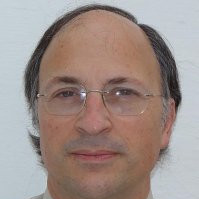Photoelectrochemical and Photocatalytic Materials for Fuel Production
A special issue of Catalysts (ISSN 2073-4344). This special issue belongs to the section "Photocatalysis".
Deadline for manuscript submissions: closed (31 January 2022) | Viewed by 12375

Special Issue Editors
Interests: solar fuels, (photo)electrochemistry for energy conversion, hydrogen and oxygen evolution reactions, (photo)electrochemical cells, preparation and characterization of (photo)electrodes
Interests: energy storage; solar fuels; CO2 reduction; photocatalysis for energy applications; redox flow batteries
Interests: renewable energy, energy storage and conversion, solar and synthetic fuels, added-value chemicals
Special Issues, Collections and Topics in MDPI journals
Special Issue Information
Dear Colleagues,
Our society urgently needs a new energy paradigm based on clean energy sources to mitigate the existing climate change on our planet. The deployment of carbon-free energy technologies that could compete with the price of fossil fuels is expected to be a key factor for sustaining the future energy requirements of the world population. Solar energy has a high potential to meet most of the energy needs. Then, the production of fuels derived from light-assisted catalytic reactions is a potentially clean, cheap, and renewable route for solar energy storage in the form of chemical bonds by the use of semiconductor materials.
In the case of the photoelectrochemical cells, non-optimal performance of the materials used as photoelectrodes in both anodic and cathodic half-reactions precludes its technological development. Such limitations derive from different factors such as optical constraints (low absorption coefficients, high band gaps), poor charge transport, poor photostability or low kinetics for the desired reactions. In photocatalytic reactions, besides the same limitations inherent to such kind of materials, additional thermodynamic requirements should be met for driving the overall process. This Special Issue aims to address relevant breakthroughs in the development and optimization of photocatalytic materials of interest in photoelectrochemical or photosynthetic cells for the production of fuels, such as hydrogen, CxHyOz compounds, syngas (with potential for further fuel generation) or ammonia as energy vectors. Articles facing electrochemical fuel production are also included in the scope of the issue as they can be used in electrolyzers coupled to photovoltaic cells.
Dr. María Isabel Díez García
Dr. Sebastian Murcia López
Prof. Dr. Joan Ramon Morante Lleonart
Guest Editors
Manuscript Submission Information
Manuscripts should be submitted online at www.mdpi.com by registering and logging in to this website. Once you are registered, click here to go to the submission form. Manuscripts can be submitted until the deadline. All submissions that pass pre-check are peer-reviewed. Accepted papers will be published continuously in the journal (as soon as accepted) and will be listed together on the special issue website. Research articles, review articles as well as short communications are invited. For planned papers, a title and short abstract (about 100 words) can be sent to the Editorial Office for announcement on this website.
Submitted manuscripts should not have been published previously, nor be under consideration for publication elsewhere (except conference proceedings papers). All manuscripts are thoroughly refereed through a single-blind peer-review process. A guide for authors and other relevant information for submission of manuscripts is available on the Instructions for Authors page. Catalysts is an international peer-reviewed open access monthly journal published by MDPI.
Please visit the Instructions for Authors page before submitting a manuscript. The Article Processing Charge (APC) for publication in this open access journal is 2700 CHF (Swiss Francs). Submitted papers should be well formatted and use good English. Authors may use MDPI's English editing service prior to publication or during author revisions.
Keywords
- Hydrogen evolution reaction
- Photoelectrochemical cells
- CO2 reduction
- Solar fuels
- Photocatalytic materials
- Photoelectrodes
- Water splitting
- Oxygen evolution reaction
- N2 reduction







